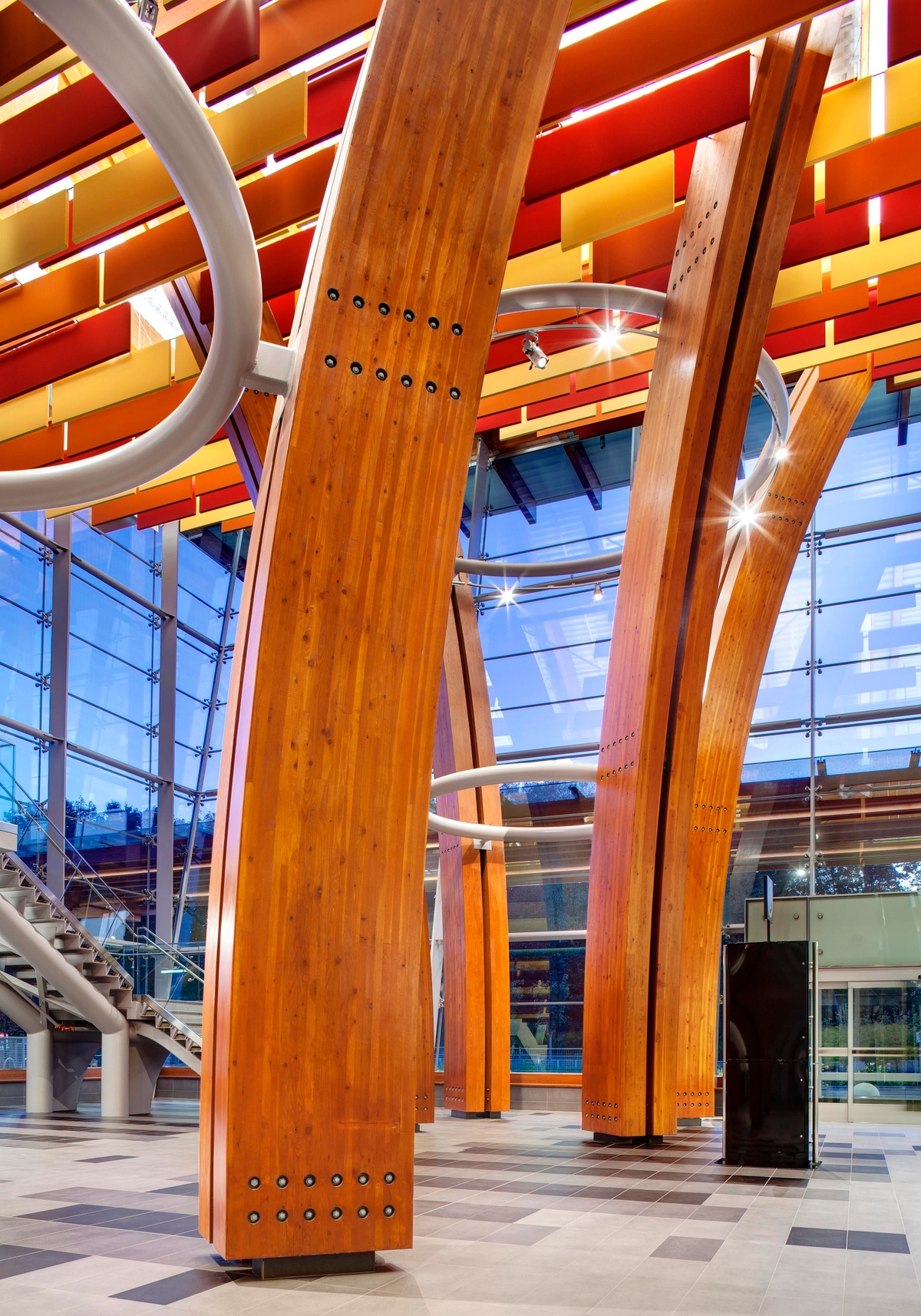Bold, striking use of wood creates a calm, stress-reducing connection to nature
Visitors to Surrey Memorial Hospital are greeted by tree-like wood columns, each consisting of four thick glue-laminated timber (glulam) “branches” that extend from floor to ceiling and support a panelized atrium roof.
- The hospital lobby features exposed structural timbers, panelling, and millwork, creating the impression the ceiling is being held up by trees.
- Research shows the visual presence of wood is both psychologically and physiologically beneficial.
- The roof consists of prefabricated panels designed to achieve long spans with minimum connections.
Wood—easy to maintain and a low-emitting material
Visiting a hospital can be a stressful experience, so when the British Columbia Ministry of Health was designing the Surrey Memorial Hospital expansion, the architects were asked to come up with a warm, natural facility that would also meet rigorous building performance demands.
The Surrey hospital addition includes an emergency department with separate spaces for adult and pediatric care, along with a tower that hosts the Neonatal Centre of Excellence and much-needed patient rooms and beds for critical and intensive-care units.
Wood products and finishes used for the millwork, interior walls and acoustic panelling help to control airborne contaminants. They are easy to maintain and are low-emitting materials, meaning they reduce concentrations of chemicals and improve indoor air quality.
Calming influence of wood in a healing environment
The bold, striking use of wood throughout the space—uncommon in such health-care settings—softens the hospital’s institutional feel and creates a calm, stress-reducing connection to nature. Wood is durable and stands up to weather, wear and tear, and rigorous maintenance.
Research on biophilic benefits of wood continues to grow, and one of British Columbia’s busiest hospitals leads the way in offering patients a comforting, supportive, and healing environment.





